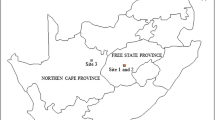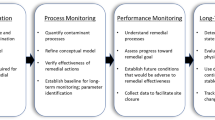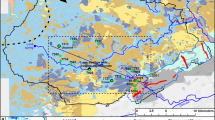Abstract
Karst aquifers are very easily contaminated because of the surficial features that commonly exist in karst terranes. Pollutant releases into sinkholes, sinking streams, and/or losing streams commonly result in concentrated solutes rapidly infiltrating and migrating through the subsurface to eventually discharge at downgradient springs unless intercepted by production wells, but slow percolation through soils also may result in serious contamination of karst aquifers. The unique features of karst terranes tend to cause significant problems in the interpretation of results obtained from water-quality grab samples of karst groundwater. To obtain more representative samples, event-driven sampling was proposed some decades ago, but event-driven sampling can be difficult and expensive to implement. In this paper, application of passive-sampling strategies is advocated as a means for effectively obtaining representative water-quality samples from karst aquifers. A passive-sampling methodology may be particularly useful for karst aquifers that may be found in complexly folded and faulted terranes. For example, a groundwater tracing investigation of a contaminated site in a karst terrane confirmed that several offsite springs and wells are connected to the contaminated site. Tracer recoveries suggested transport rates that were relatively slow for flow in a karstic aquifer (~0.02 m/s). Breakthrough curves were erratic and spiky. To obtain representative groundwater samples, a passive-sampling methodology is recommended.
Résumé
Les aquifères karstiques sont très facilement contaminés en raison des caractéristiques de surface qui prévalent en terrains karstiques. Les rejets de polluants dans les dolines, les cours d’eau qui s’infiltrent et/ou les pertes entraînent généralement une percolation rapide de solutés concentrés et leur migration à travers le sous-sol, pour finalement ressortir au niveau des sources situées à l’aval hydraulique, sauf s’ils sont interceptés au niveau de puits avec pompages. Cependant la percolation lente à travers les sols peut également entraîner une contamination importante des aquifères karstiques. Les caractéristiques uniques des terrains karstiques ont tendance à poser des problèmes significatifs quant à l’interprétation des résultats de qualité des eaux souterraines karstiques obtenus à partir d’échantillons ponctuels. Pour obtenir des échantillons plus représentatifs, un échantillonnage basé sur les événements a été proposé depuis quelques décennies, mais celui-ci peut s’avérer difficile et coûteux à mettre en œuvre. Dans cet article, l’application de stratégies d’échantillonnage passif est. préconisée comme un moyen d’obtenir efficacement des échantillons représentatifs de la qualité de l’eau des aquifères karstiques. Une méthode d’échantillonnage passif peut être particulièrement utile dans les aquifères karstiques des terrains plissés ou fracturés de manière complexe. Par exemple, une étude de traçage des eaux souterraines d’un site contaminé en terrain karstique a confirmé que plusieurs sources et puits hors site sont reliés au site contaminé. Le taux de récupération des traceurs suggère des vitesses de transport relativement lentes pour un aquifère karstique (~0.02 m/s). Les courbes de restitution sont erratiques et présentent des pics. Pour obtenir des échantillons d’eau souterraine représentatifs, une méthode d’échantillonnage passif est. recommandée.
Resumen
Los acuíferos kársticos se contaminan muy fácilmente debido a las características superficiales que existen comúnmente en los terrenos kársticos. Las emisiones de contaminantes en sumideros, cursos de hundimiento y/o cursos de pérdida suelen dar lugar a que los solutos concentrados se infiltren y migren rápidamente a través del subsuelo para finalmente descargarse en manantiales con pendiente decreciente, a menos que sean interceptados por los pozos de extracción, pero la lenta filtración a través de los suelos también puede dar lugar a una grave contaminación de los acuíferos kársticos. Las características singulares de estos terrenos kársticos tienden a causar problemas importantes en la interpretación de los resultados obtenidos de las muestras de calidad de agua de las aguas subterráneas kársticas. Para obtener muestras más representativas, hace algunos decenios se propuso el muestreo por eventos, pero su aplicación puede ser difícil y costosa. En el presente documento se propugna la aplicación de estrategias de muestreo pasivo como medio para obtener eficazmente muestras representativas de la calidad del agua de los acuíferos kársticos. Una metodología de muestreo pasivo puede ser particularmente útil para los acuíferos kársticos que pueden encontrarse en terrenos complejos plegados y con fallas. Por ejemplo, una investigación de un seguimiento de las aguas subterráneas de un sitio contaminado en un terreno kárstico confirmó que varios manantiales y pozos situados fuera del sitio están conectados con el sitio contaminado. Las recuperaciones del trazador sugirieron tasas de transporte relativamente lentas para el flujo en un acuífero kárstico (~0.02 m/s). Las curvas de avance eran erráticas y con picos. Para obtener muestras representativas de aguas subterráneas, se recomienda una metodología de muestreo pasivo.
摘要
因为岩溶地层普遍存在于地面的特征,岩溶含水层很容易被污染。污染物释放到下落水洞,伏流和/或排泄型的河流通常会导致浓缩的溶质迅速渗透并迁移穿过地下,最终在下游的泉水中排泄出来,除非被生产井拦截,但通过土壤的缓慢渗透也会导致岩溶含水层严重污染。喀斯特地层的独特特征使得从喀斯特地下水的水质抽样结果分析可解释出现的相关问题。为了获得更多有代表性的样本,几十年前提出了事件驱动的采样方法,但是事件驱动的采样方法可能既难于操作又昂贵。在本文中,提出应用无源采样策略作为有效地从岩溶含水层中获得代表性水质样品的一种方法。被动采样方法对于可能在复杂折叠和断层的地层中探知岩溶含水层特别有用。例如,对喀斯特地层污染场地的地下水追踪调查证实,几个非现场泉水和水井已与该污染场地相关。示踪剂回收率表明,岩溶含水层中的流动传输率相对较慢(~0.02 m/s)。穿透曲线是奇怪的而且有尖峰。为了获得代表性的地下水样品,建议采用无源采样方法。
Resumo
Os aquíferos cársticos são facilmente contaminados pelas suas características superficiais que comumente existem em terrenos cársticos. Liberações de poluentes em sumidouros, riachos afundando e/ou riachos perdidos geralmente resultam em solutos concentrados que se infiltram e migram rapidamente através da subsuperfície para, eventualmente, descarregar em nascentes de gradiente, a menos que seja interceptado por poços de produção, mas a percolação lenta através dos solos também pode resultar em contaminação séria dos aquíferos cársticos. As características únicas dos terrenos cársticos tendem a causar problemas significativos na interpretação dos resultados obtidos a partir de amostras de qualidade da água subterrâneas cársticas. Para obter amostras mais representativas, a amostragem baseada em eventos foi proposta algumas décadas atrás, mas a amostragem baseada em eventos pode ser difícil e cara de implementar. Neste artigo, define-se a aplicação de estratégias de amostragem passiva como um meio para obter efetivamente amostras representativas da qualidade da água de aquíferos cársticos. Uma metodologia de amostragem passiva pode ser particularmente útil para aquíferos cársticos que podem ser encontrados em terrenos complexamente dobrados e falhados. Por exemplo, uma investigação de traçadores de água subterrânea de um local contaminado em um terreno cárstico confirmou que várias nascentes e poços externos estão conectados ao local contaminado. As recuperações de traçadores sugeriram taxas de transporte que eram relativamente lentas para o fluxo em um aquífero cárstico (~ 0.02 m/s). As curvas de identificação foram erráticas e com picos. Para obter amostras representativas de águas subterrâneas, recomenda-se uma metodologia de amostragem passiva.






Similar content being viewed by others
References
Bayen S, ter Laak TL, Buffle J, Hermens JM (2009) Dynamic exposure of organisms and passive samplers to hydrophobic chemicals. Environ Sci Technol 43(7):2206–2215. https://doi.org/10.1021/es8029895
Blatnik M, Culver DC, Gabrovšek F, Knez M, Kogovšek B, Liu H, Mayaud C, Mihevc A, Mulec J, Nǎpǎruș-Aljančič M, Otoničar B, Petrič M, Pipan T, Prelovšek M, Ravbar N, Shaw T, Slabe T, Šebela S, Hajna NZ (2020) Water quality monitoring in karst. In: Knez M, Otoničar B, Petrič M, Pipan T, Slabe T (eds) Karstology in the classical karst. Springer, Cham, Switzerland, pp 127–137. https://doi.org/10.1007/978-3-030-26827-5
Benson, RC, Yuhr, LB (2016) Site characterization in karst and pseudokarst terrains: practical strategies and technology for practicing engineers, hydrologists, and geologists. Springer, Heidelberg, Germany
Bidwell JR, Becker C, Hensley S, Stark R, Meyer MT (2010) Occurrence of organic wastewater and other contaminants in cave streams in northeastern Oklahoma and northwestern Arkansas. Archives Environ Contamin Toxicol 58:286–298. https://doi.org/10.1007/s00244-009-9388-6
Bonacci O (1987) Karst hydrology with special reference to the Dinaric karst. Springer, New York
Booij K, Hofmans HE, Fischer CV, van Weerlee, EM (2003) Temperature-dependent uptake rates of nonpolar organic compounds by semipermeable membrane devices and low-density polyethylene membranes. Environ Sci Technol 37:361–366. https://doi.org/10.1021/es025739i
Booij K, Sleiderink HM, Smedes F (1998) Calibrating the uptake kinetics of semipermeable membrane devices using exposure standards. Environ Toxicol Chem 17(7):1236–1245. https://doi.org/10.1002/etc.5620170707
Booij K, Van Weerlee EM, Fischer CV, Hoedemaker J (2000) Passive sampling of organic contaminants in the water phase, final report, Nioz - Rapport 2000 – 5, Netherlands Institute for Sea Research
Bopp SK (2004) Development of a passive sampling device for combined chemical and toxicological long-term monitoring of groundwater. PhD Thesis, Universität Rostock, Rostock, Germany
Burgess RM, Driscoll SBK, Burton GA, Gschwend PM, Ghosh U, Reible D, Ahn S, Thompson T (2016) Laboratory, field, and analytical procedures for using passive sampling in the evaluation of contaminated sediments: user’s manual. Technical report EPA/600/XX-15/071, US Environmental Protection Agency, Washington, DC
Coxon C, Thorn RH (1989) Temporal variability of water quality and the implications for monitoring programmes in Irish limestone aquifers. In: Sahuquillo A, Andreu J. O’Donnell T (eds) Proceedings of the International Symposium on Groundwater Management: Quantity and Quality. IAHS Publ. no. 188, IAHS, Wallingford, UK, pp 111–120
Currens JC (1999) A sampling plan for conduit-flow karst springs: minimizing sampling cost and maximizing statistical utility. Eng Geol 52:121–128. https://doi.org/10.1016/S0013-7952(98)00064-7
Demougeot-Renard H, Bapst A, Trunz C, Fischer L, Renard P (2017) Integrative passive samplers to detect chlorinated hydrocarbon contamination in karst. In: Renard P, Bertrand C (eds) EuroKarst 2016, Neuchâtel. Advances Karst Science, pp 231–241. https://doi.org/10.1007/978-3-319-45465-8_23
Dreybrodt W (2004) Dissolution: carbonate rocks and dissolution—evaporite rocks. In: Gunn J (ed) Encyclopedia of caves and karst science. Fitzroy Dearborn, London
Felton GK, Taraba JL, (1995) The impact of karst water quality sampling frequency on parameter estimates. International American Society of Agricultural Engineers Meeting Paper 95–2426
Fernández D, Vermeirssen ELM, Bandow N, Muñoz K, Schäfer RB (2014) Calibration and field application of passive sampling for episodic exposure to polar organic pesticides in streams. Environ Poll 194:196–202. https://doi.org/10.1016/j.envpol.2014.08.001
Field MS (1990) Transport of chemical contaminants in karst terranes: outline and summary. In: Simpson ES, Sharp Jr JM (eds) Selected papers on hydrogeology, vol 1. 28th International Geological Congress, Washington, DC, pp 17–27
Field MS (1992-1993) Karst hydrogeology and chemical contamination. J Environ Syst 22(1):1–26
Field MS (2017) Tracer-test results for the Central Chemical Superfund Site, Hagerstown, MD, May 2014—December 2015. Technical report EPA/600/R-17/032. US Environmental Protection Agency, Washington, DC
Ford D, Williams P (2007) Karst hydrogeology and geomorphology. Wiley, Chichester, UK
Fox JT, Adams G, Sharum M, Steelman KL (2010) Passive sampling of bioavailable organic chemicals in Perry County, Missouri cave streams. Environ Sci Technol 44:8835–8841. https://doi.org/10.1021/es1019367
Górecki T, Namieśnik J (2000) Passive sampling: trends in. Anal Chem 21(4):276–291. https://doi.org/10.1016/S0165-9936(02)00407-7
Horowitz AJ (2008) Determining annual suspended sediment and sediment-associated trace element and nutrient fluxes. Sci Total Environ 400:315–343. https://doi.org/10.1016/j.scitotenv.2008.04.022
Huckins JN, Petty JD, Lebo JA, Almeida FV, Booij K, Alveraz DA, Cranor WL, Clark RC, Mogensen BB (2002) Development of the permeability/performance reference compound approach for in situ calibration of semipermeable membrane devices. Environ Sci Technol 36:85–91. https://doi.org/10.1021/es010991w
ITRC (2006) Technology overview of passive sampler technologies, technical report DSP-4. The Interstate Technology & Regulatory Council, Diffusion Sampler Team, Washington, DC, http://www.itrcweb.org/Guidance/GetDocument?documentID=26. Accessed 13 November 2016
Jeong Y, Schäffer A, Smith K (2018) A comparison of equilibrium and kinetic passive sampling for the monitoring of aquatic organic contaminants in German rivers. Water Res 145:248–258. https://doi.org/10.1016/j.watres.2018.08.016
Johnes PJ (2007) Uncertainties in annual riverine phosphorus load estimation: impact of load estimation methodology, sampling frequency, baseflow index and catchment population density. J Hydrol 332:241–258. https://doi.org/10.1016/j.jhydrol.2006.07.00
Kačaroğlu F (1999) Review of groundwater pollution and protection in karst area. Water Air Soil Poll 113:337–356
Kaserzon SL, Kennedy K, Hawker DW, Thompson J, Carter S, Roach AC, Booij K, Mueller JF (2012) Development and calibration of a passive sampler for carboxylates and sulfonates in water. Environ Sci Technol 46(9):4985–4993. https://doi.org/10.1021/es300593a
Kilroy G, Coxon C (2004) Temporal variation of phosphorus fraction in Irish karst springs. Environ Geol 47:421–430. https://doi.org/10.1007/s00254-004-1171-4
Kot A, Zabiegeła B, Namieśnik J (2000) Passive sampling for long-term monitoring of organic pollutants in water. Trends Anal Chem 19(7):446–459. https://doi.org/10.1016/S0165-9936(99)00223-X
Kot-Wasik A, Zabiegeła B, Urbaniwicz M, Dominiak E, Wasi A, Namieśnik J (2007) Advances in passive sampling in environmental studies. Anal Chim Acta 602:141–163. https://doi.org/10.1016/j.aca.2007.09.013
Kresic N (2013) Water in karst: management, vulnerability, and restoration. McGraw-Hill, New York
Lerch RN, Erickson JM, Wicks CM (2001) Intensive water quality monitoring in two karst watersheds of Boone County, Missouri. In: Proceedings National Cave Karst Management Symposium, Tucson, AZ, October 2001, pp 157–168
Levy W, Pandelova M, Henkelmann B, Bernhȍft S, Fischer N, Antritter F, Schramm K-W (2017) Persistent organic pollutants in shallow percolated water of the Alps, karst system (Zugspitze summit, Germany). Sci Total Environ 579:1269–1281. https://doi.org/10.1016/j.scitotenv.2016.11.113
Lowmann R, Booij K, Smedes F, Vrana B (2012) Use of passive sampling devices for monitoring and compliance checking of POP concentrations in water. Environ Poll Sci Res 19:1185–1895. https://doi.org/10.1007/s11356-012-0748-9
Malet E, Astrade L, Gauchon C, Jaillet S (2017) Monitorer les milieu naturels entre ambitions et contraintes une affaire de compromise [Monitoring the natural environment between ambitions and constraints a matter of compromise]. In: Collection Edytem Numéro 19, Monitoring en Milieux Naturels − Retours D’expérience en Terrains Difficiles, pp 9–17. https://doi.org/10.3406/edyte.2017.1356
Metcalfe CD, Beddows PA, Bouchot GG, Metcalf TL, Li H, Lavieren HV (2011) Contaminants in the coastal karst aquifer system along the Caribbean coast of the Yucatan Peninsula, Mexico. Environ Poll 159:991–997. https://doi.org/10.1016/j.envpol.2010.11.031
MPCA (2005) Ground water investigations in karst areas. Guidance Document 4–09, Petroleum Remediation Program, Minnesota Pollution Control Agency. https://www.pca.state.mn.us/sites/default/files/c-prp4-09.pdf. Accessed 23 June 2020
Namieśnik J, Zabiegeła B, Kot-Wasik A, Partvka M, Wasik A (2005) Passive sampling and/or extraction techniques in environmental analysis: a review. Anal Bioanal Chem 381:279–301. https://doi.org/10.1007/s00216-004-2830-8
Novic AJ, O’Brien DS, Kaserzon SL, Hawker DW, Lewis SE, Mueller JF (2017) Monitoring herbicide concentrations and loads during a flood event: a comparison of grab sampling with passive sampling. Environ Sci Technol 51:3880–3891. https://doi.org/10.1021/acs.est.6b02858
Palmer AN (2007) Cave geology. Cave Books, Dayton, OH
Persson C (2015) Calibration and application of passive sampling in drinking water for perfluoroalkyl substances. MSc Thesis, Upsala University, Upsala, Sweden
Poulier G, Lissalde S, Charriau A, Buzier R, Cleries K, Delmas F, Mazzella N, Guibaud G (2015) Estimates of pesticide concentrations and fluxes in two rivers of an extensive French multi-agricultural watershed: application of the passive sampling strategy. Environ Sci Poll Res 22(11):8044–8057. https://doi.org/10.1007/s11356-014-2814-y
Preston SD, Bierman VJ, Silliman SE (1992) Impact of flow variability on error in estimation of tributary mass loads. J Environ Eng 118:402–419. https://doi.org/10.1061/(ASCE)0733-9372(1992)118:3(402)
Quinlan JF, Alexander Jr EC (1987) How often should samples be taken at relevant locations for reliable monitoring of pollutants from an agricultural, waste disposal, or spill site in a karst terrane? A first approximation. In: Beck BF (ed) Multidisciplinary Conference on Sinkholes and Environmental Impacts of Karst, Proceedings, Balkema, Dordrecht, The Netherlands, pp 277–293
Quinlan JF, Ewers RO (1985) Ground water flow in limestone terranes: Strategy rationale and procedure for reliable, efficient monitoring of ground water quality in karst areas. In: Fifth National Symposium and Exposition on Aquifer Restoration and Ground Water Monitoring, Columbus, OH. National Water Well Association, Worthington, OH, pp 197–234 http://info.ngwa.org/GWOL/pdf/850138326.pdf. Accessed 23 October 1985
Rabiet M, Margoum C, Gouy V, Carluer N, Coquery M (2010) Assessing pesticide concentrations and fluxes in the stream of a small vineyard catchment: effect of sampling frequency. Environ Poll 158:737–748. https://doi.org/10.1016/j.envpol.2009.10.014
Roll IB (2015) Novel integrative methods for sampling environmental contaminants. PhD Thesis, Arizona State University, Tempe, AZ
Roll IB, Hallden RU (2016) Critical review of factors governing data quality of integrative samplers employed in environmental water monitoring. Water Res 94:200–207. https://doi.org/10.1016/j.watres.2016.02.048
Schleppi P, Waldner PA, Stähli M (2006) Errors of flux integration methods for solutes in grab samples of runoff water, as compared to flow-proportional sampling. J Hydrol 319:266–281. https://doi.org/10.1016/j.jhydrol.2005.06.034
Smedes F (2010) Evaluatie van monitoring met passive sampling: relaties met mosselen, zwevend stof en totaal water [Evaluation of monitoring with passive sampling: relationships with mussels, suspended matter and total water]. Technical report 1202990–000-BGS-0004, Deltares, Enabling Delta Life, Delft, The Netherlands. http://publications.deltares.nl/1202990_000.pdf. Accessed 1 December 2016
Smedes F, Bakker D, de Weert J (2010) The use of passive sampling in WFD monitoring: the possibilities of silicon rubber as a passive sampler. Technical report 1202337–004-BGS-0027, Deltares, Enabling Delta Life, Delft, The Netherlands. http://www.passivesampling.net/utrechtworkshop/pres/1202337-004-BGS-0027-r-The%20use%20of%20passive%20sampling%20in%20WFD%20monitoring.pdf. Accessed 12 November 2016
Schwarz K, Gocht T, Grathwohl P (2011) Transport of polycyclic aromatic hydrocarbons in highly vulnerable karst systems. Environ Poll 159:133–139. https://doi.org/10.1016/j.envpol.2010.09.026
Trček B (2007) How can the epikarst zone influence the karst aquifer hydraulic behavior. Environ Geol 51:761–765. https://doi.org/10.1007/s00254-006-0387-x
Vermeirssen ELM, Bramaz N, Hollender J, Singer H, Escher BI (2009) Passive sampling combined with ecotoxicological and chemical analysis of pharmaceuticals and biocides: evaluation of three Chemcatcher™ configurations. Water Res 43:903–914. https://doi.org/10.1016/j.watres.2008.11.026
Vrana B, Mills GA, Allan IJ, Dominiak E, Svensson K, Knutsson J, Morrison G, Greenwood R (2005) Passive sampling techniques for monitoring pollutants in water. Trends Anal Chem 24(10):845–868. https://doi.org/10.1016/j.trac.2005.06.006
Vrba J (1988) Groundwater quality monitoring as a tool of groundwater resources protection. In: Karst hydrogeology and karst environment protection, 21st Congress of IAH, proceedings, vol XXI, part 2. Geological Publ. House, Beijing, China, pp 88–97
White WB (1988) Geomorphology and hydrology of karstic terrains. Oxford Univ. Press, Oxford, UK
Zabiegeła B, Kot-Wasik A, Urbaniwicz M, Namieśnik J (2010) Passive sampling as a tool for obtaining reliable analytical information in environmental quality monitoring. Anal Bioanal Chem 396:273–296. https://doi.org/10.1007/s00216-009-3244-4
Zhang Z, Troldborg M, Yates K, Osprey M, Kerr C, Hallet PD, Baggaley N, Rhind SM, Dawson JJC, Hough RL (2016) Evaluation of spot and passive sampling for monitoring, flux estimation and risk assessment of pesticides within the constraints of a typical regulatory monitoring scheme. Sci Total Environ 569–570:1369–1379. https://doi.org/10.1016/j.scitoenv.2016.06.219
Acknowledgements
The author appreciates the reviews and comments provided by Dr. Carol Wicks and Dr. William White. Their thoughts and comments greatly improved the manuscript. The author also thanks Dr. Augusto Auler, Dr. Philippe Meus, and two anonymous reviewers for their very helpful thoughts and comments.
Author information
Authors and Affiliations
Corresponding author
Ethics declarations
Disclaimer
The views expressed in this paper are solely those of the author and do not necessarily reflect the views or policies of the US Environmental Protection Agency. The mention of trade names does not constitute an endorsement.
Additional information
Published in the special issue “Five decades of advances in karst hydrogeology”.
Rights and permissions
About this article
Cite this article
Field, M.S. Groundwater sampling in karst terranes: passive sampling in comparison to event-driven sampling strategy. Hydrogeol J 29, 53–65 (2021). https://doi.org/10.1007/s10040-020-02240-9
Received:
Accepted:
Published:
Issue Date:
DOI: https://doi.org/10.1007/s10040-020-02240-9




